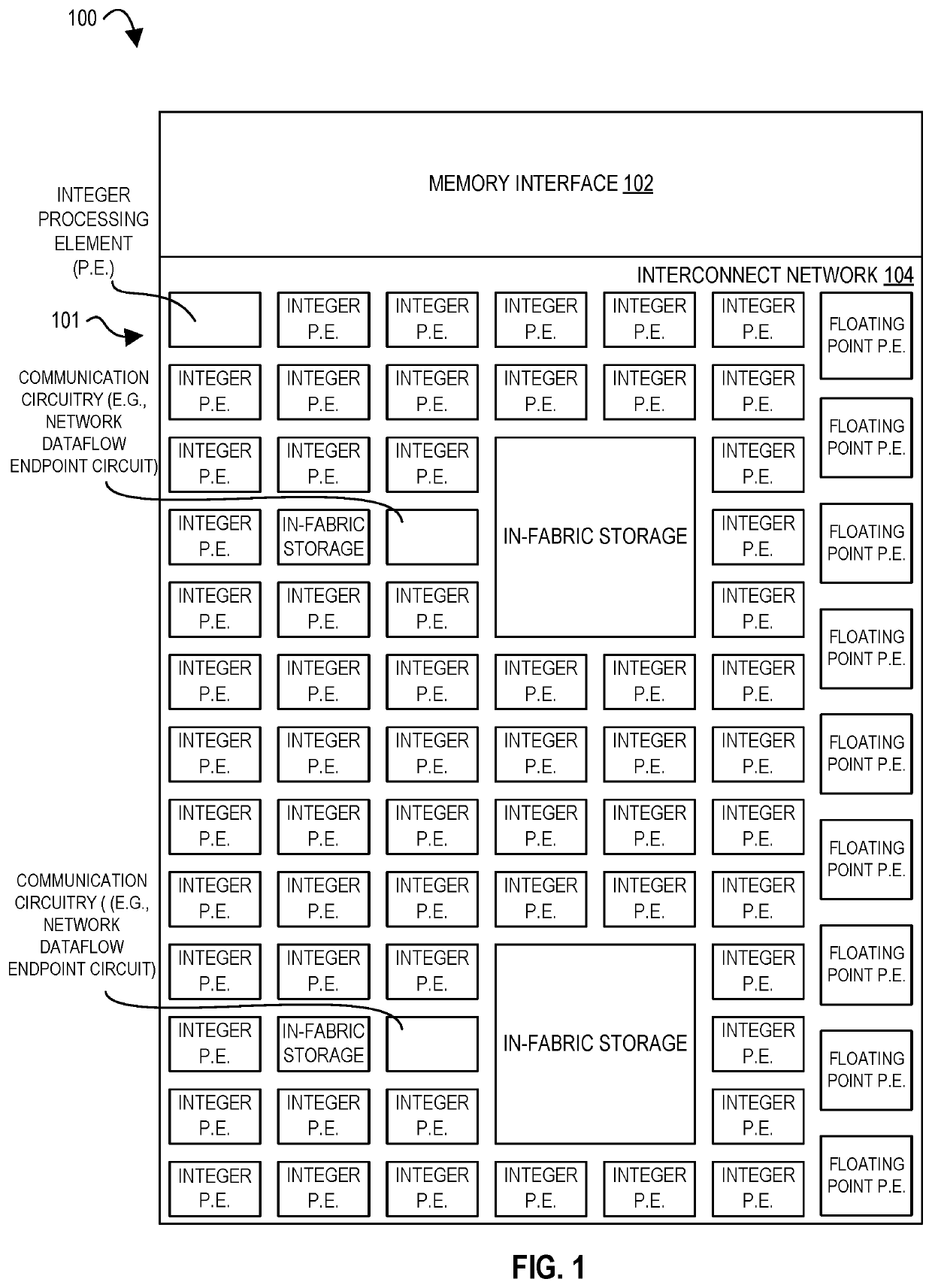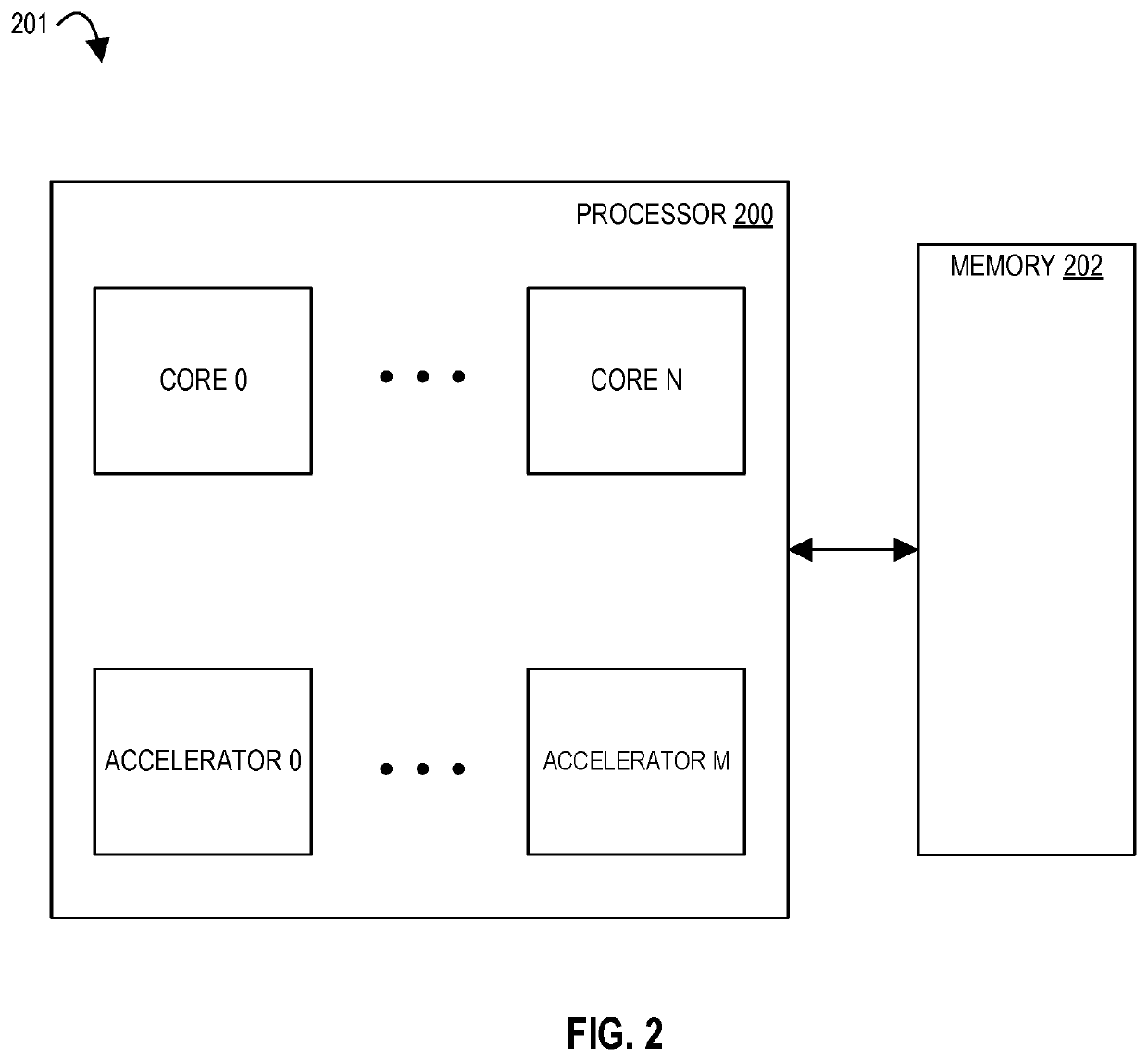Apparatuses, methods, and systems for swizzle operations in a configurable spatial accelerator
a spatial accelerator and configurable technology, applied in the field of electrical devices, can solve the problems of high energy cost, out-of-order scheduling, and difficulty in improving the performance and energy efficiency of program execution with classical von neumann architectures
- Summary
- Abstract
- Description
- Claims
- Application Information
AI Technical Summary
Benefits of technology
Problems solved by technology
Method used
Image
Examples
example circuit switched
[0485]In certain embodiments, the routing of data between components (e.g., PEs) is enabled by setting switches (e.g., multiplexers and / or demultiplexers) and / or logic gate circuits of a circuit switched network (e.g., a local network) to achieve a desired configuration, e.g., a configuration according to a dataflow graph.
[0486]FIG. 67 illustrates a flow diagram 6700 according to embodiments of the disclosure. Depicted flow 6700 includes coupling a plurality of processing elements together by an interconnect network between the plurality of processing elements to transfer values between the plurality of processing elements 6702; storing a configuration value in a configuration register within a first processing element of the plurality of processing elements that comprises a first portion that, when set to a first value that indicates a first mode, causes the first processing element to pass an input value to an output buffer of the first processing element with...
example 1
[0488]An apparatus comprising:[0489]a plurality of processing elements;[0490]an interconnect network between the plurality of processing elements to transfer values between the plurality of processing elements; and[0491]a first processing element of the plurality of processing elements comprising:[0492]a plurality of input queues,[0493]a configuration register within the first processing element to store a configuration value having:[0494]a first portion that, when set to a first value that indicates a first mode, causes the first processing element to pass an input value to operation circuitry of the first processing element without modifying the input value, and, when set to a second value that indicates a second mode, causes the first processing element to perform a swizzle operation on the input value to form a swizzled input value before sending the swizzled input value to the operation circuitry of the first processing element, and[0495]a second portion that causes the first p...
example 2
[0499]The apparatus of example 1, wherein, when at least one of the plurality of input queues stores the input value, the input controller is to send a not empty value to the operation circuitry of the first processing element to indicate the first processing element is to, when the first portion of the configuration value is set to the second value, perform the swizzle operation on the input value from the at least one of the plurality of input queues to form the swizzled input value, and then begin the operation on the swizzled input value.
PUM
 Login to View More
Login to View More Abstract
Description
Claims
Application Information
 Login to View More
Login to View More - R&D
- Intellectual Property
- Life Sciences
- Materials
- Tech Scout
- Unparalleled Data Quality
- Higher Quality Content
- 60% Fewer Hallucinations
Browse by: Latest US Patents, China's latest patents, Technical Efficacy Thesaurus, Application Domain, Technology Topic, Popular Technical Reports.
© 2025 PatSnap. All rights reserved.Legal|Privacy policy|Modern Slavery Act Transparency Statement|Sitemap|About US| Contact US: help@patsnap.com



